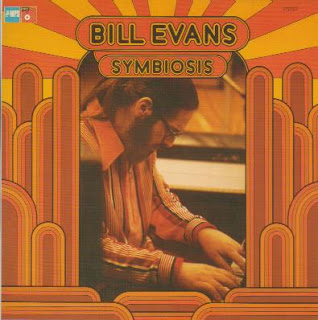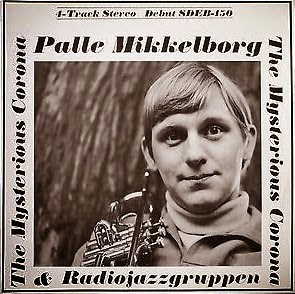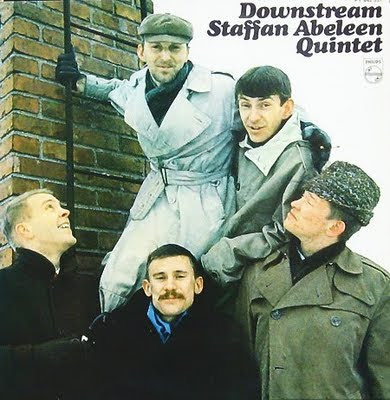BILL EVANS - SYMBIOSIS

Bill Evans for MPS from 1974.
First posted at OIR July 06.
Symbiosis is a beautiful and vastly overlooked album in Evans’ prolific canon, yet one that needs to be seriously reckoned with. Ogerman, who had worked with Bill on two previous albums in 1963 and in 1965 (Bill Evans With Symphony Orchestra) , composed an adventurous and often hauntingly gorgeousl work in two parts. In the third section of the first movement, working over a slow and gentle jazzy swing, Bill plays long and fast- moving lines on electric piano that catch your ear with their shimmering beauty and complexity. Ogerman writes lush but never maudlin strings (and a few flutes) here in dense, often whole-tone and poly-chordal fashion underneath -- creating a perfect cushion for the pianist’s swirling right-hand lines. The Rhodes fits in well here, as it does sparingly in and out through Symbiosis’ framework. It is often used as punctuation at the end of a written ensemble phrase, or as an ensemble texture. Evans’ choices as to when to use the Rhodes or the Steinway are wise indeed, and not without great sensitivity, integrating seamlessly within the composition. Claus Ogerman as composer-arranger succeeds marvelously here with a work of great harmonic expression and rhythmic interest that showcases Evans’ lyrical expression and his obviously inherent classical strengths, yet within a composition that represents much of what jazz is about. (Ogerman would later do the same for tenor sax virtuoso Michael Brecker for his Cityscape album.) If we consider the aural comparisons to the other albums Bill did with orchestral accompaniment, it is far and away the most superior achievement, and may represent his best use of the electric keyboard in context. “Symbiosis” is far too important to be neglected as often as it has when jazz writers discuss Bill Evans albums. As biographer Keith Shadwick noted: “Evans brings to the work the consummate artistry and sensitivity that occurs when he is stretched and stimulated. His rubato playing in the opening and second movement sometimes alone, sometimes in unison with the strings, is both moving and immensely accomplished in a way that few jazz or classical pianists could have countenanced
Ripped @320 from the deleted 1994 Motor Music cd


